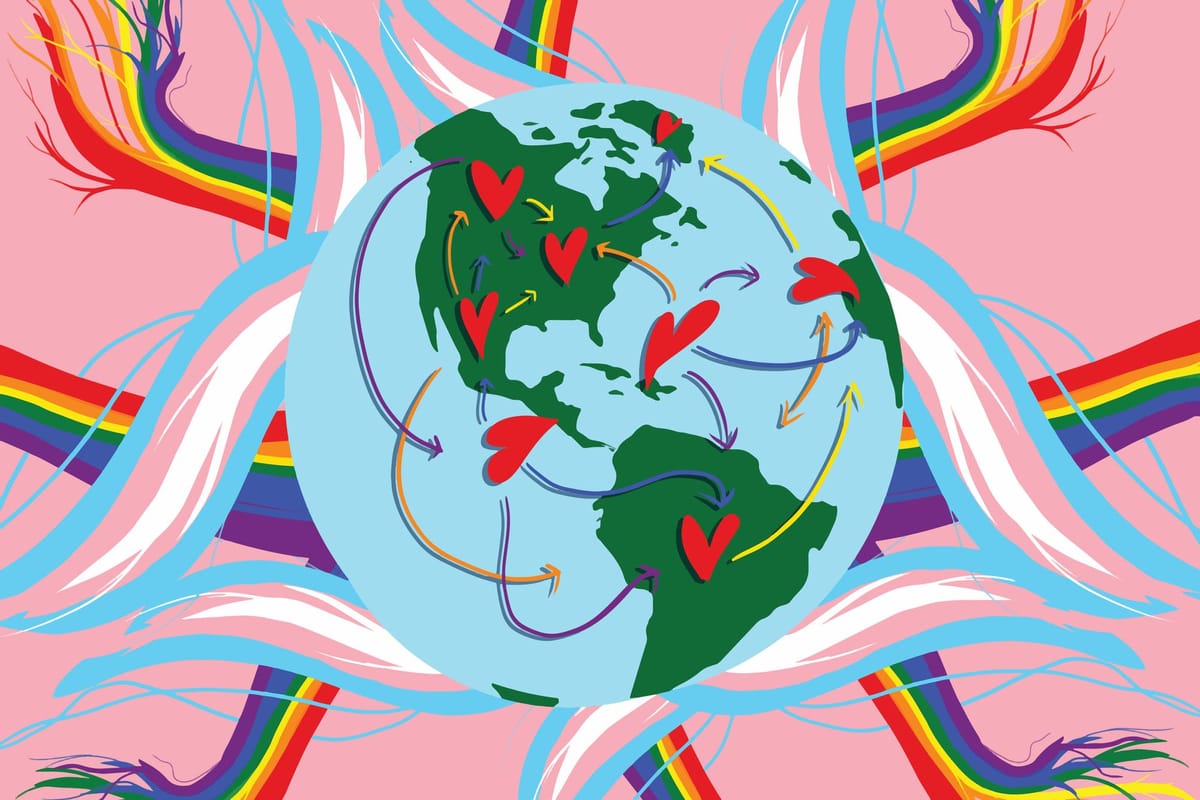Navigating the Complexity: How to Advance LGBTQ+ Inclusion at Global Organizations
Learn why LGBTQ+ inclusion leads to business success. Discover strategies, models of engagement, and best practices for global corporations.

With the magnitude and severity of anti-LGBTQ+ legislation around the world, companies with global footprints must be mindful in their approach to LGBTQ+ inclusion. However, the complexity of the issue doesn’t mean that companies have an excuse not to act. As Karyn Twaronite of EY says, “Companies can be respectful of local cultures and inclusive — they are not mutually exclusive.”Not only is equality and inclusion worth promoting as a social issue, but the size and influence of the LGBTQ+ community means multinational organizations can’t afford to ignore this significant market. The global buying power of the LGBTQ+ community is more than US$ 3.7 trillion, and at least 10% of the global population identifies as LGBTQ+.
A company’s support of the LGBTQ+ community also has ripple effects beyond that one consumer segment. Socially minded individuals – especially younger consumers – expect corporations to prioritize diversity, equity, and inclusion (DEI). People want to work for, and buy from, organizations that are truly inclusive of all people. In fact, marketing data and analytics firm Kantar found that 75% of consumers in a global study considered a brand’s diversity and inclusion reputation when making purchase decisions.
The Challenge of LGBTQ+ Inclusion
It seems clear then that multinational corporations – or MNEs – should prioritize LGBTQ+ inclusion to optimize business success. The challenge is that these companies might operate in nations or regions where LGBTQ+ identities are still prosecuted and public LGBTQ+ inclusion might put employees’ safety at risk.
At least 67 countries have laws criminalizing same-sex activities between consenting adults, according to Human Rights Watch. Seven of those countries have legal sanctions, including the death penalty, for these so-called crimes. Additionally, at least nine countries have laws criminalizing gender expression that target transgender and gender-nonconforming individuals. The sentences for gender expression vary from a fine of $100 to three years in prison.
Models of Engagement
Harvard Business Review found three primary models of LGBTQ+ engagement implemented by multinational corporations. The model that a company will adopt depends largely on the nations they operate in and the safety concerns for LGBTQ+ employees and consumers:
- When in Rome: In this model, companies adhere to local norms, which often entails avoiding LGBTQ+ issues altogether, especially in places where LGBTQ+ people face significant risk.
- The Embassy: Companies create an inclusive internal culture without trying to influence local laws or attitudes. This model is often adopted in places that are unfriendly but not overtly hostile to LGBTQ+ people.
- The Advocate: Companies following this model go beyond internal inclusion, working for societal change through lobbying, demonstrating, and supporting LGBTQ+ activists.
Global brand Sodexo is a great example of an Advocate organization. In 2022, Sodexo earned its 15th consecutive 100/100 on Human Rights Campaign’s annual assessment of workplace equality. The top score requires that organizations implement workforce protections for LGBTQ+ employees, enact inclusive benefit policies, and support corporate social responsibility, including outreach or engagement with the LGBTQ+ community, specifically via philanthropic contributions and public policy influence.
Even in hostile countries, MNEs can take an overarching When in Rome approach and still take action. In 2019, Brunei made same-sex activity punishable by death, and global corporations like Deutsche Bank, Goldman Sachs, and many others responded by boycotting Brunei-owned hotels. Within weeks, the kingdom rescinded enforcement of the death penalty, although same-sex activity remains illegal.
Best Practices
Although LGBTQ+ inclusion initiatives will vary largely depending on the circumstances, there are a handful of best practices most Embassy and Advocate companies can safely and effectively implement.
- Build a culture of respect. Remind employees that the point of LGBTQ+ inclusion is not necessarily to change anyone’s religious or political beliefs, but to create a culture where all people feel able to do their best work.
- Raise awareness. A huge roadblock to allyship and inclusion is a lack of understanding. People tend to fear what they don’t know, or may just be worried about using the wrong terms or pronouns. Educating your organization on basics, such as the definitions of gender identity and sexual orientation or the meaning of the LGBTQ+ acronym, can go a long way in increasing mutual understanding.
- Examine policies. Make sure that formal organizational policies give LGBTQ+ employees the same support as everyone else. Do you have zero-tolerance policies, meaning all instances of discrimination will be investigated seriously and punished appropriately? Are benefits as equitable as possible, given local jurisdiction? What about leave policies?
- Provide training. A large barrier to true LGBTQ+ allyship is not knowing how to speak up or act when witnessing discrimination. Bystander training is key so that allies know how to react when they witness microaggressions, unfair treatment, or overt discrimination.
- Establish ERGs. In offices where it is safe, establish an LGBTQ+ employee resource group (ERG) and encourage virtual participation from employees worldwide. In many organizations, ERGs are the primary point of advocacy and support for specific identity groups, and their existence alone can signify an inclusive company culture. To ensure that ERGs get the resources and attention they need, make sure each has a dedicated executive sponsor and clear ties to the organization’s overarching mission.
- Find strength in numbers. If your organization does want to participate in advocacy in a location where it might be risky, consider partnering with other like-minded organizations to drive LGBTQ+ policy forward.
Millions of people worldwide work for MNEs, and they also dominate the consumer market, making up over 40% of all consumer spending. Because of their influence, MNEs play a crucial role in advancing LGBTQ+ inclusion globally. By adopting appropriate models of engagement, implementing best practices, and advocating for change, these corporations can contribute to a more inclusive global workplace for LGBTQ+ individuals.
Ready to get started by educating your team on LGBTQ+ terms, inclusion, and allyship best practices? Contact us to bulk enroll your employees in our two-hour online training, The ABCs of LGBTQ+.



